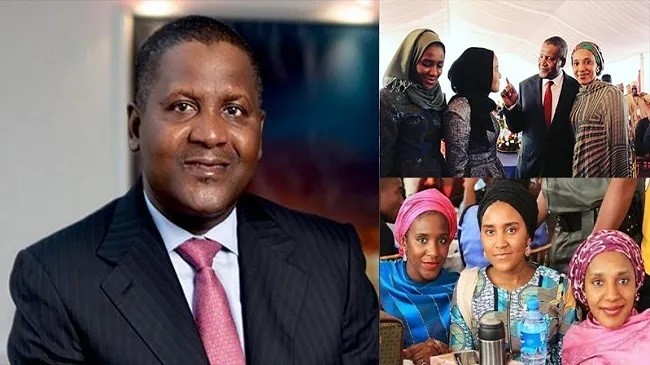Some say Zambia is the best-kept secret in Africa, an undiscovered mecca for a variety of safari and game-viewing activities. It is a raw slice of Africa-friendly and with many instinctive wild places worthy of any innovator.
South-central Africa’s high plateau is where Zambia is located. Its neighbors include Zimbabwe and Botswana to the south, Namibia and Angola to the west, Malawi and Mozambique to the east and southeast, and the Democratic Republic of the Congo and the United Republic of Tanzania to the north and northeast.
Zambia, Botswana, and Zimbabwe are landlocked neighbors in Southern Africa. Their prospects for development and ability to compete globally depend heavily on regional integration and the progress of neighbouring states.
Zambia-Botswana Relation
President Mokgweetsi Eric Masisi of Botswana recently emphasized that “Zambia is not only a good neighbour and a strategic partner in Botswana’s developmental efforts but also a friend and an important ally in the region as well as at an international level.”
Both countries gained independence within two years of one another, Zambia in 1964 and Botswana in 1966 and they have been committed to accelerating the conclusion of all issues necessary for the operationalization of the Kazungula bridge including the speedy conclusion of the bilateral agreement that aims to operationalize the One-Stop Border Post and the agreement establishing the Kazungula Bridge Authority.
On health issues, Botswana and Zambia are still exchanging expertise. The citizens of Zambia who reside near the Kazungula border were provided COVID-19 testing by Botswana.
On regional issues, Zambia and Botswana also yielded to the peace efforts and resolution of their border dispute with the Democratic Republic of Congo.
Botswana has drawn lessons from Zambia on textile, agriculture, and mining. This action helps to boost the economic order of both countries.
They also acknowledged the responsibility they have as leaders of both countries to drive the development of their people and their nations.
Zambia–Zimbabwe Relations
The bilateral ties that exist between Zambia and Zimbabwe are a type that has promoted the economic stance of the countries.
They were a member of the Federation of Rhodesia and Nyasaland from 1953 to 1963, along with Nyasaland (now Malawi).
In 1963, the 770-kilometer (479-mile) border between Zambia and Zimbabwe was first formed as a frontier within the British colonial realm. As the Zambezi River travels east through Victoria Falls and Lake Kariba, the boundary moves along with it. The quadriphonic region, which Namibia and Botswana share, is where the boundary’s westernmost point is located.
Both countries are rich in minerals; in Zambia’s case copper, while Zimbabwe is rich in diamonds, gold, chromite, and nickel reserves. Both countries could be wealthy if they harvest their minerals responsibly – and, of course, the world markets offered stable prices
Both countries have huge potential supplies of hydroelectric power. The Zambesi River is the border between them, and the Kariba Dam (which they share) supplies a separate power station in each country. The majority of the electricity needs for each country are met by hydroelectricity, generated from dams or rivers.
Income and Food Security
With the need to specifically increase the opportunities for women and young people in both rural and urban areas so they can secure their food security and earn a living in Zambia and Zimbabwe, some actions have been taken along the value chain, which includes smallholder farmers and other stakeholders, in order to achieve this.
The facilitation of new insurance and financial services as well as the development of marketable skills are important initiatives that, among other things, support economic growth and offer protection from climate-related calamities.
The creation, promotion, and adoption of nutrient-rich, climate-resilient crops, and climate-smart agriculture practices are additional priorities of the Zambia-Zimbabwe relationship.
Key actions include conducting policy dialogue with a view to delivering integrated health services to a higher standard of quality and increasing national spending on social and disaster protection mechanisms.
Both countries have been stern in fighting inequality, alleviating poverty, building communities’ resilience, increasing food security, and improving access to services, especially healthcare. The relation also aims to increase political participation and establish accountable and resilient public institutions.
Also, in line with Switzerland’s International Cooperation Strategy for the 2021–24 period, the Southern Africa programme prioritizes and focuses on two countries: Zimbabwe and Zambia.
This initiative focuses on achieving food security, providing access to high-quality services, especially healthcare, and strengthening civil society and public institutions.
With the intention to support elected national, local, and independent oversight bodies in carrying out and being accountable in their responsibilities and protecting human rights in order to improve democratic governance and human rights in Zimbabwe, and subsequently in Zambia.
Fundamental human rights are essential for settling disputes, calming tensions, fostering economic growth, and preserving human dignity. Zambia-Zimbabwe relation strongly encourages women’s and young people’s engagement in decision-making processes, including decisions on business and the economy, in order to assist their communities in determining their own destiny.
Climate change, gender equality, and governance
In a way, the Zambia-Zimbabwe relationship is working on addressing climate change, which is considered to be a threat multiplier. They promote climate-resilient solutions and systems to reduce the adverse effects of climate change on communities.
They have also worked to achieve gender equality by encouraging women to participate in decision-making and opinion-forming processes and improving conditions for women living in poverty and promoting participation in decision-making for all segments of society and advocating for responsible and accountable governments and bodies.
Culture
Culture is not excluded as art and culture has contributed to the freedom of expression, peacebuilding, and sustainable development. One percent of the Cooperation Programme budget is used to promote culture, engage young people and raise awareness of crucial issues among communities and decision-makers.
The Tourist Attractions Zambia-Zimbabwe Share
The magnificent Victoria Falls is a cascade that can be seen around halfway down the Zambezi River, on the boundary between Zimbabwe and Zambia. At one of its broadest points, the waterfall spans the full width of the Zambezi River, roughly twice as wide and twice as deep as Niagara Falls (more than 5,500 feet [1,700 meters).
The river plunges over a sheer cliff at the falls, dropping a maximum of 355 feet (108 meters). The average flow through the falls is just under 33,000 cubic feet (935 cubic meters) per second.
Zambia, Botswana, and Zimbabwe have a wealth of natural resources and a relatively well-educated young population who are willing to take bold steps in cementing the good relationship that the South shares
Therefore, the presidents, ministers, leaders, and stakeholders in the above-mentioned countries should continue to amplify the good relationship it shares and make it show in the country’s economy and development.


